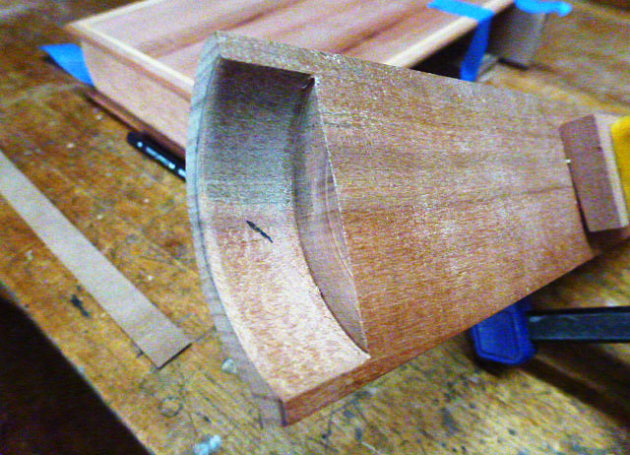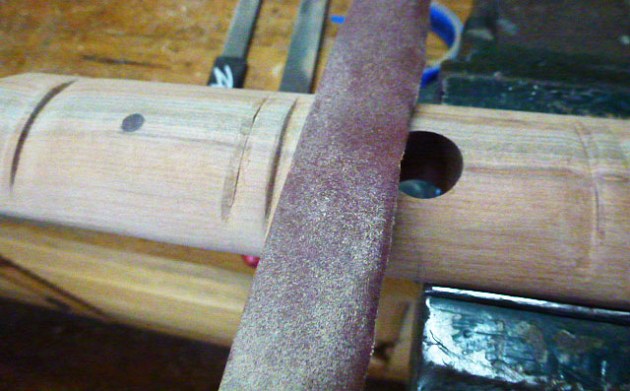Making a ‘book box'
Words and photos: Ray Collins
I thought I’d take on the challenge of making an unusual wooden box with a drawer in the form of a ‘book’.
I was lucky enough to pick up some old growth dry myrtle planks at a local auction which upon thicknessing revealed that beautiful soft pink/red colour, which was just what I wanted before embarking on this exercise. I decided the book should represent a hardcover style book, as close as possible, so considering the size of the myrtle I decided on a large book, 300 x 230 x 750mm.
Unfortunately, the finished width of the myrtle was a little less than required so I made a Huon pine edging to put around the base cover and then added another thin edging in myrtle to make up the size. I made two the same, both 5mm thick for the back and front covers.
The next step was to make the semi-round cuts shown above in the top and bottom ends of the binding block section to accommodate the bound look of the pages. This was achieved by using a forstner bit set to the depth required to fit the book ends. A sacrificial piece was clamped to the binding block to allow for accurate centring of the bit. This also prevented chip out when the bit came to the exit cut of each revolution. Then, after marking the book ends to the shape of the forstner bit, the linisher sanding disk came to the fore to accurately shape them to fit the forstner recess.

Next, the ‘look alike’ pages for the drawer front and book ends. I sorted through a stack of old, dry Tasmanian oak to find a length with a very light colour with close straight grain over its entire length. I then used a wire brush and worked lengthwise along the grain, digging out the softer wood and leaving the harder grain raised to represent the pages.

The drawer was made from the same myrtle but with a blackwood base rebated into the base at the sides and front. It has four magnets, two on each side at the back, installed to prevent the drawer falling out when picked up.

A 60mm push release plunger button was turned to fit into the pre drilled 18mm forstner hole in the centre binding which would allow release of the drawer from the magnets when opening from the fully closed position.


I incorporated a spring so the plunger would not only disengage the drawer from the magnets, but also so it could return to its original position on the binding block so it became inconspicuous as a novel secret drawer opening device.
Next was to make the four relief straps onto the back binding. I used blue tape formed over the binding for marking, then a fine pull saw to cut down the required depth. A chisel was used to cut down to the base of each saw mark depth, then a rasp, fine file and 240 grit sandpaper to finish the banding bands.
After the final fine sanding, the book box was ready for spray finishing. Unfortunately, the finish must have contained some degree of wax, or similar, which turned the lovely pink myrtle to a brown colour. However it does give it an old age look to the book.
The layout, set up size and depth of cut for the lettering on the cover was created by our workshop facilitator Neil Lachlan and then cut in using a laser engraver machine.
The title Tasmanian Timbers, Vol.1 seemed most appropriate, as the project is entirey constructed from Tasmanian timbers, including Tasmanian oak, blackwood, myrtle and Huon pine.
Ray Collins is a member of the Defence and Veterans Worshop Inc. in Hobart which provides a hands-on woodworking, social and rehabilitation centre for ex service men and women.
See another of Ray's look-alike projects here




